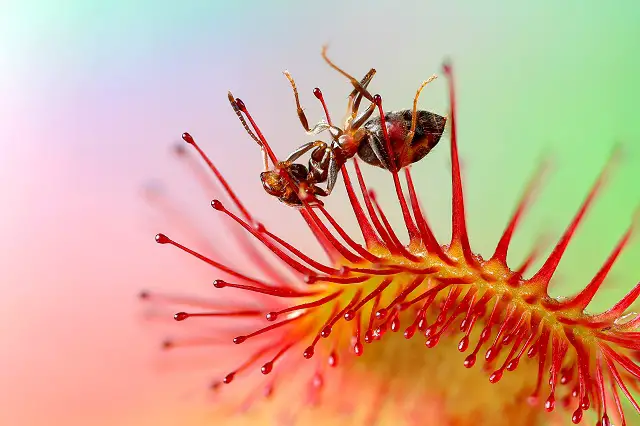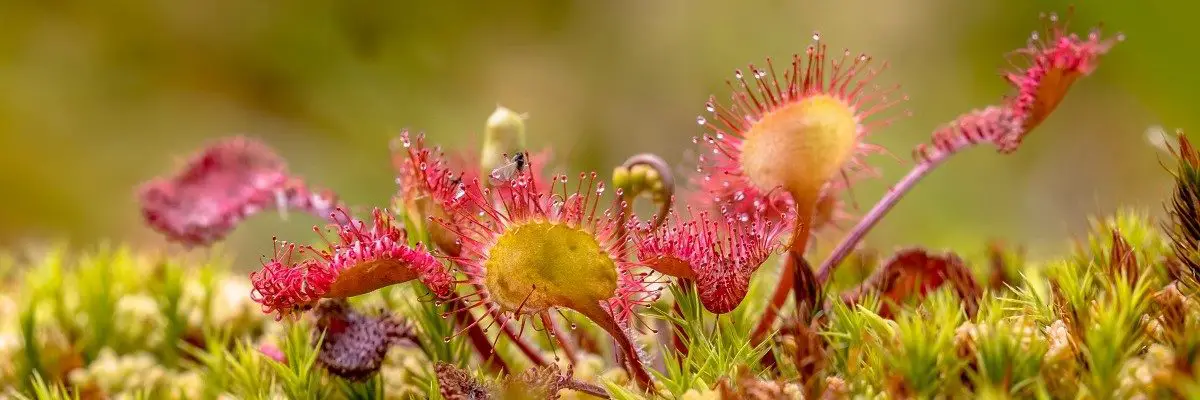Sundews come in more than 90 species. Almost all of these plants are found in Australia and South Africa. However, some also grow in hot, humid climates in Georgia, Florida, and other places. Usually found near wetlands, bogs and marshes grow on top of sphagnum moss in acidic soil.
Without describing the trap mechanism, we could not provide adequate Sundew plant information. Sundews belong to the genus Drosera and are frequently found in plant stores. There are tiny arms or stems that have sticky filaments at the tips. As a result, these filaments secrete a substance that does more than just catch small prey; it also digests it. It takes four to six days for the arms to fold in on the insect so that it can be digested.
A very special property of the glue makes it unique. The glue is both highly elastic and adhesive. It has caught the attention of medical researchers. Nanoparticles can be found in the glue in addition to polysaccharides, salts, and water. Nanoparticles may enable insect capture by increasing the surface contact and force of the glue’s surface or giving it a high degree of elasticity. When dried, this glue is useful for tissue engineering since it encourages cell attachment and growth.
To digest insect prey, sundews need the enzymes produced by bacteria and fungi. Since only these microbes can digest chitin, they are particularly important in breaking down insect exoskeletons. These breakdown products are then absorbed by leaf glands, ensuring nutrients support photosynthesis. Prey species are generally unrecognizable by this point.
Sundew (Drosera) Habitat
In general, sundew grows in moist, acidic soils with high levels of sunlight in constantly wet or seasonally wet areas. Several habitat types are present: bogs, fens, swamps, marshes, Venezuelan tepuis, Australian wallum, dry South African streams, and rocky banks. Some species thrive in the presence of sphagnum moss, which absorbs much of the soil’s nutrients and causes the soil to acidify, reducing nutrient availability to plants. The result is that sundews can thrive in places where they would normally be outcompeted by stronger vegetation.
Sundews can be found from Alaska to New Zealand. With more than 20 species each in South America and southern Africa, Australia accounts for roughly half of all known species. Large portions of Eurasia and North America are also home to a few species. Sundews only rarely occur in temperate and arctic regions. These areas may be considered the edges of their generic ranges. Only three species live in Europe. Besides the three species and the hybrid native to Europe, four other species are found in North America.

What Do Sundews Look Like?
The plants mostly grow from one side of a curving stem that bears five-petaled white or pink flowers that are borne in clusters above the basal leaves. It typically has leaves less than 2.5 cm (1 inch) in diameter and usually forms a rosette. Insects and small prey are attracted to and entrapped in the supple gland-tipped hairs on the upper surface. The tentacles are commonly called tentacles because they encase their prey in a mesh or net. The sticky tips of the tentacles trap the prey, which is then broken down by digestive enzymes. A leaf extends to set up a new trap after digestion.


